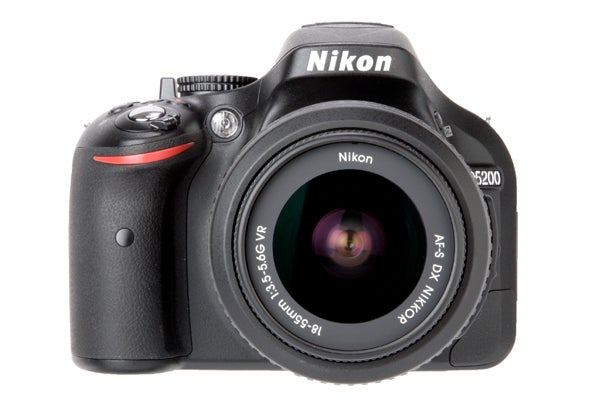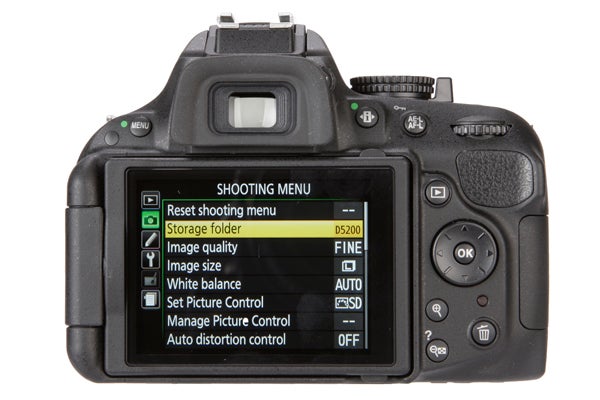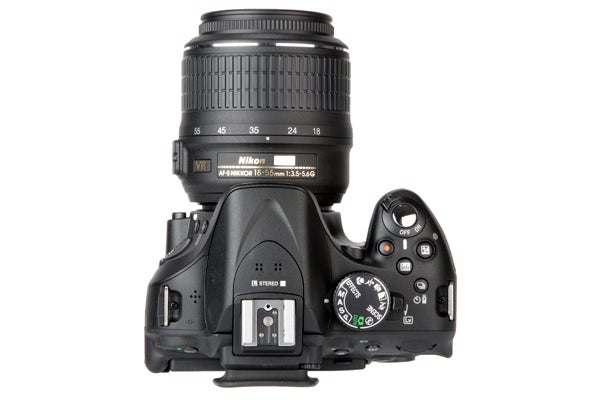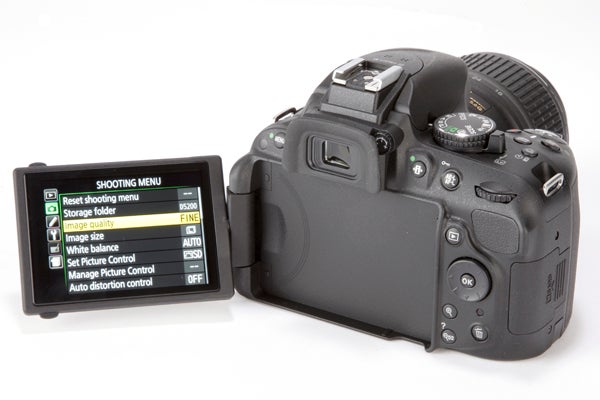Nikon D5200 Review
Nikon D5200
Nikon's latest entry-level DSLR offers an impressive feature set and great image quality

Sections
- Page 1 Nikon D5200 Review
- Page 2 Design and Performance Review
- Page 3 Image Quality: ISO Tests Review
- Page 4 Image Quality: Real World Tests Review
- Page 5 Image Quality Summary and Verdict Review
Verdict
Pros
- Impressive 39-point AF system
- Continuous shooting speed of 5fps
- Stunning image quality
- Intuitive graphic user interface
Cons
- Slow AF point positioning in Live View
- Lags when previewing creative effects in real time
- Noisy kit lens performance
Key Specifications
- Review Price: £720.00
- 24.1MP APS-C CMOS sensor
- Nikon EXPEED 3 image processor
- ISO 100 - 6400 (exp. to 25,600)
- 39-point Multi-CAM 4800DX AF module
- 1080/30p/50i Full HD movie recording
- 3in, 921k-dot vari-angle LCD monitor
Nikon D5200: Introduction
Having spent most of 2012 updating its full-frame DSLR range with the addition of the D4, D800 and D600 models, Nikon has shifted its attention back to its APS-C DSLR range with the launch of the upper entry-level D5200. Succeeding the two-year-old D5100 (which, for now at least, remains in production), the D5200 sits between the entry-level D3200 and the more enthusiast-orientated D7000. 
Given that the generally well-received D5100 is presently subject to heavy discounting (shopping around online, it’s possible to pick up a D5100 body plus 18-55mm kit zoom for around £420), the big question is whether Nikon has managed to improve on an already successful model and whether the upgrades justify the extra expense? Let’s take a closer look and find out.
Nikon D5200: Features
Whereas the ND5100 employed the same 16.2MP sensor found inside the D7000, the D5200 gets an all-new 24.1MP CMOS chip. Nikon remains adamant that this 24.1MP chip is not based on the 24.2MP sensor found inside the D3200 that was launched in the summer of 2012, and is instead a new sensor altogether. Used at full resolution the D5200 is capable of outputting 6000 x 4000 pixels, although there are also lower settings of 4496 x 3000 (Medium) and 2992 x 2000 (Small) available. As with all APS-C sensors, the default aspect is 3:2 and in addition to compressed JPEG capture the D5200 can also capture 14-bit Raw files, saved in Nikon’s proprietary .NEF file format.
Another area where the D5200 updates the D5100 is with the inclusion of a latest generation EXPEED 3 image processor. This is the same processing engine that’s used within the company’s flagship D4 and D800 full-frame models, and which allows the D5200 to achieve a maximum continuous burst speed of 5fp – 1fps higher than the D5100. In addition, the EXPEED 3 processor also enables the D5200 to shoot 1920 x 1080 Full HD movies at 60i and 50i frame rates, as well as 30p. Sensitivity remains on a par withj the D5100 though, with a standard range of ISO 100-6400. As with the D5100, this can be further expanded via the Hi1 and Hi2 settings to a maximum ISO equivalent of 25,600.
In addition to the new sensor and image processor, the D5200 also benefits from the the same Multi-CAM 4800DX autofocus module that was introduced with the D7000. This offers 39 AF-points to the D5100’s 11-points, resulting in much-improved frame coverage. It further benefits from nine cross-type sensors as opposed to the D5100’s single cross-type AF point. Should you want to be able to move the active focus point from one side of the frame to the other more quickly then it’s possible to reduce the system to an 11-point array via the Custom setting menu.
In addition, the D5200 also offers a 3D focus tracking capability, which is especially useful to sports, action and wildlife photographers. When used on this setting the camera will calculate the subject’s movement and speed and then automatically select the correct AF-point the moment the image is captured. This predictive AF-area mode is ably supported by five other AF-area modes that include: single-point AF, dynamic-area AF (9, 21 or 39 points) and auto-area AF. As for focus modes, there’s a choice of four – auto-servo AF (AF-A), single-servo AF (AF-S), continuous-servo AF (AF-C), and manual focus.
For metering duties the D5200 employs the same 2016-pixel metering sensor that’s used by the more advanced D7000 and D600 models. Should you need to dial in exposure compensation then you’ll find that the D5200 offers up to /-5EV in 1/3 or 1/2EV steps. Exposure compensation can also be used while shooting video should the lighting situation change while recording. 
On the back of the camera body the D5200 offers a 3in, 921k-dot LCD display. Unlike the D3200’s screen, which is fixed in place, the D5200’s uses a side-hinged vari-angle design that allows it to be pulled out from the body and rotated. This aids high and low angled shooting, and also self-portraits however unlike the Canon EOS 650D (the D5200’s main rival) it doesn’t offer any touch-screen functionality.
Furthermore, there’s no built-in GPS functionality or Wi-Fi connectivity either. With more and more CSCs and DSLRs offering at least one or more of these features, it could be argued that Nikon has missed a trick to future-proof the D5100 here. All is not completely lost though and should you want to take advantage of either feature then the D5200 can support them, however you’ll need to purchase the Nikon GP-1 GPS unit (£199) and the Nikon WU-1a wireless mobile adapter (£49) to do so.
In addition to still image capture, the D5200 offers a solid video recording feature set. Shooting at 1080p Full HD you have options to shoot, at 30, 25 and 24fps, in addition to which it’s also possible to shoot at 60i/50i. One thing to note here is that the camera uses a central crop of the sensor when recording in 50i, and so when shooting movies using this setting the camera will display an opaque border to help with composition. Movie files are stored in the .MOV format using the H.264/MPEG-4 compression. Last but not least, there’s also on-screen audio monitoring along with a 3.5mm jack, with which to attach an external microphone. Sadly there’s no audio-out port to monitor sound through headphones though.


